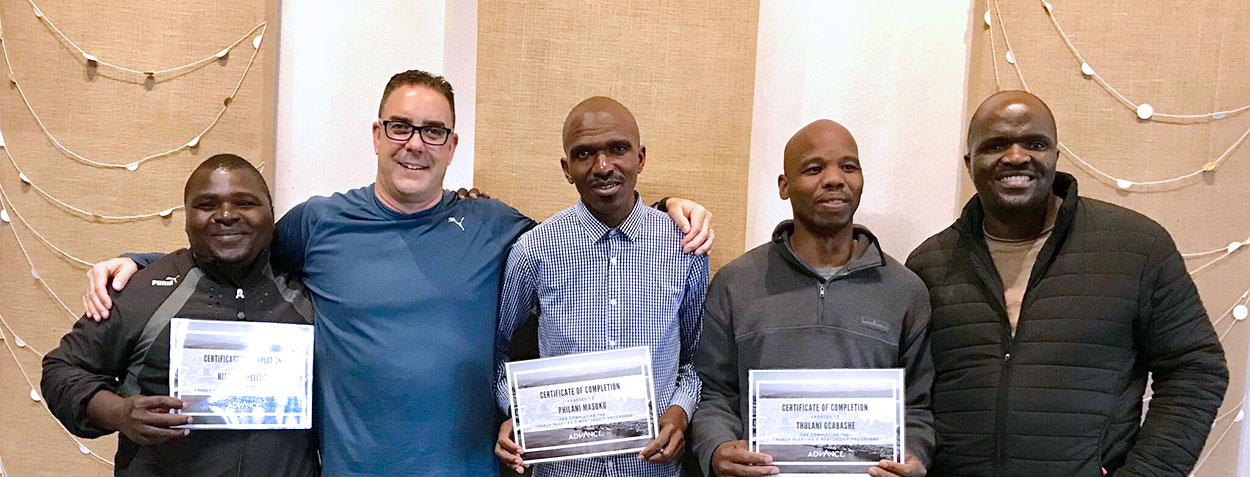 The Journey Down Reconciliation Road
The Journey Down Reconciliation Road
This week, some of us at CSC sat down with Pastor Gareth and Pastor Robert to hear more about the journey of Reconciliation Road, a multiracial church that is breaking walls of segregation in South Africa. This week we give you Part 1 – which is focused on Pastor Gareth’s journey before God put Pastor Robert in his path.
Part 1 – A church built on a road.
Although the era of apartheid is over, the line that divides black and white in South Africa is like a towering stronghold. But on the boundary line between the township of Bhekulwandle and Amanzimtoti, that divide came in the form of a road – a physical, visual mark of the deep relational divide between black and white.
One side of the road was where the black people lived and the other side was where white people lived. One side has tiny homes, no running water, poor schooling and sub-standard medical care, and yet just across the road is a middle-class town with all the amenities of modern life.
In 1988 a church community bought a large property adjacent to this significant road in the town but they never managed to build a church building on the property.
Years later, in 2003, Pastor Gareth was called to come and lead the church community. Just before he arrived, the church community nearly sold the empty property as the leadership of the time felt they had not stewarded this property well.
Thankfully, Pastor Gareth was given the opportunity to speak into that decision before he arrived. He asked the leaders if they would stop the sale, at least until he arrived to come and lead the church. He wanted a chance to visit the property and assess for himself what God was saying about the land.
Little did Gareth know that years earlier, an elderly member of the church had a vision during one of the prayer meetings on the property. He saw a black hand shaking a white hand on that property. But at that moment there was no visible evidence of that vision having ever come to life in the church.
As Pastor Gareth surveyed the road and the sprawling property, he wasn’t entirely sure why God was calling him to lead this particular church nor what it had to do with this property. The church had been planted and had grown during a time when South Africa was still under the racially oppressive system of Apartheid. Oasis Church (as it was called at the time) comprised a congregation that was predominantly white middle or upper-class people. Having come from a very multicultural church in Cape Town, Gareth kept asking God, why have you brought me here?
“I felt God say to me, this property will become like a gate in the wall of Jerusalem,” Gareth explained as he sat with a couple staff members as CSC. “The people from one side of the road will meet at the gate with the people from the other side of the road. Together they would then go out on mission.”
It was an outrageous vision, Gareth and Robert explained. Not only is the divide between races so strong, but the class divide in South Africa is often almost impenetrable. Any path to resolution that ever emerges in that country quickly becomes mired in political discord and heated arguments between various diverse groups of people.
“It is very complicated,” Pastor Robert explained. He used the analogy of a soccer field in which one team was given the advantage with a field inclined at an angle to ensure that team played downhill and, as a result, had amassed many goals during the game. “The legacy of Nelson Mandela in 1994 was to formally remove apartheid and essentially legally level the playing field,” Pastor Robert added. “But the sad reality is that although those who had been previously prejudiced now had a level field. Meanwhile the other side continues to have a substantial advantage since the game has restarted due to their far higher score from the period when the field was so tilted in their favour!”
Gareth nodded, adding that many fellow white peers he engages with today struggle to see how they began the new post-apartheid journey with an upper hand. “Although both sides appear to desire reconciliation, everyone has very different ideas of exactly what reconciliation might look like,” he added.
Some have the perception that people must stop living in the past, Gareth and Robert explained. But forgetting the past wasn’t so easy if one’s land had been taken from his or her family under apartheid because of one’s skin colour. Others have the idea that restitution is necessary – and that those who had their land taken should have their land returned or be compensated. But restitution isn’t so easy when those being forced to give back are made to shoulder the responsibility for decisions made by other people. “I didn’t create apartheid. I didn’t make those decisions,” they might say. “How is it fair that I have to give up the land that has been nurtured and improved by my investment and work?”
These are just some examples of the complex problems. And political solutions only seem to deepen them.
But flashing back to that day in 2003, Gareth believed God was calling him to lead the church to a Jesus-centred solution. He recalled God speaking to him in a voice that was about as close to audible as a voice from God could be: “I want you to build me a non-racial, multi-cultural, class-crossing church.”
That’s going to be pretty close to impossible, Gareth thought to himself as he considered God’s request.
But despite those thoughts, the pastor trusted in a miracle-working God and decided to take everything one day and one step at a time.
Stay tuned for Part 2 – First Steps Down a Rocky Path.
